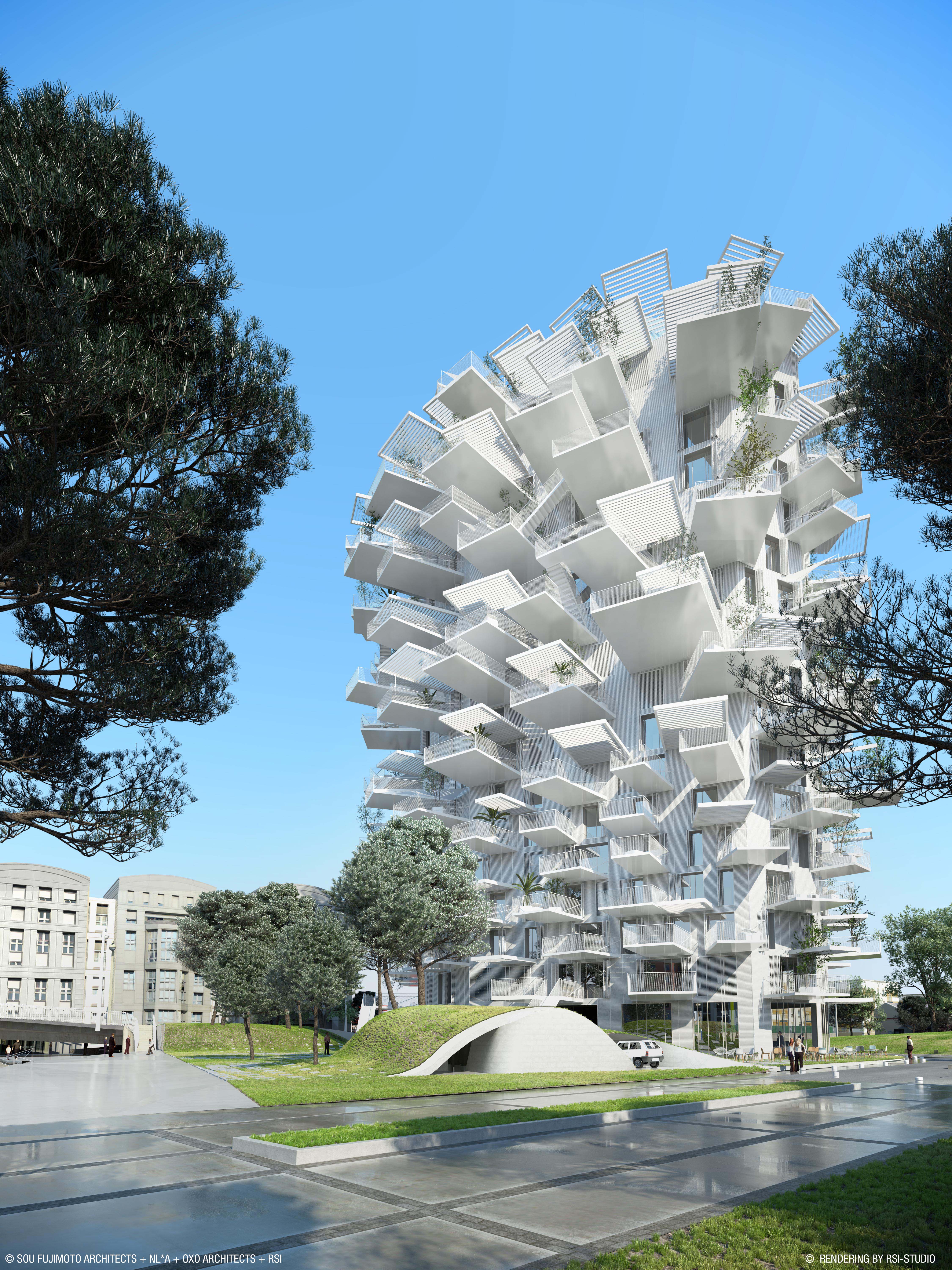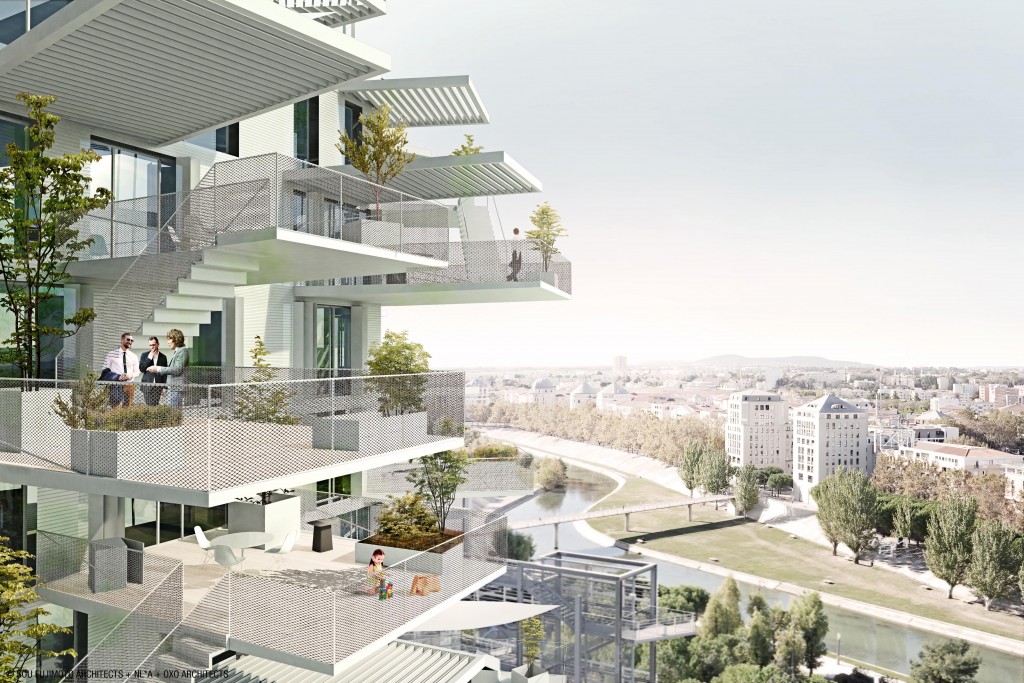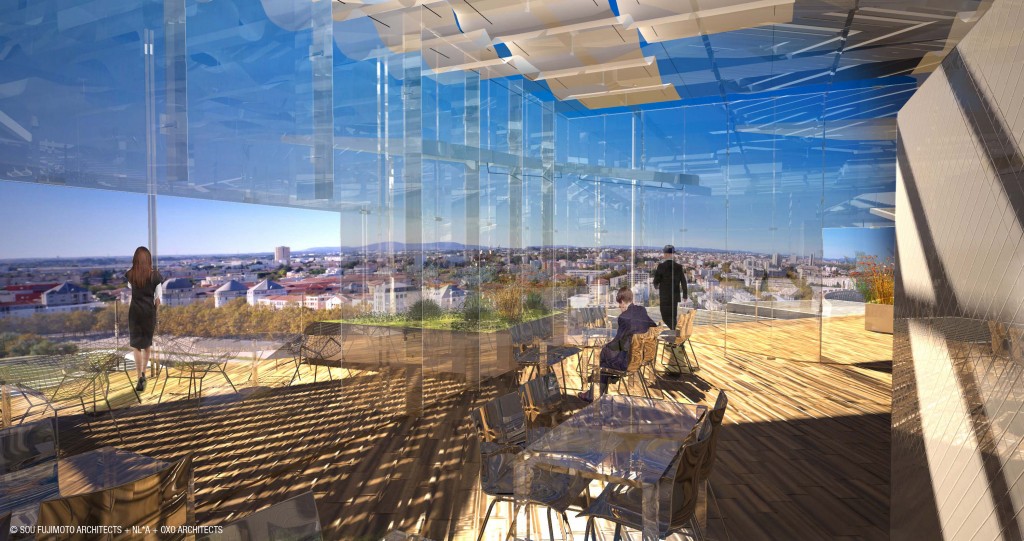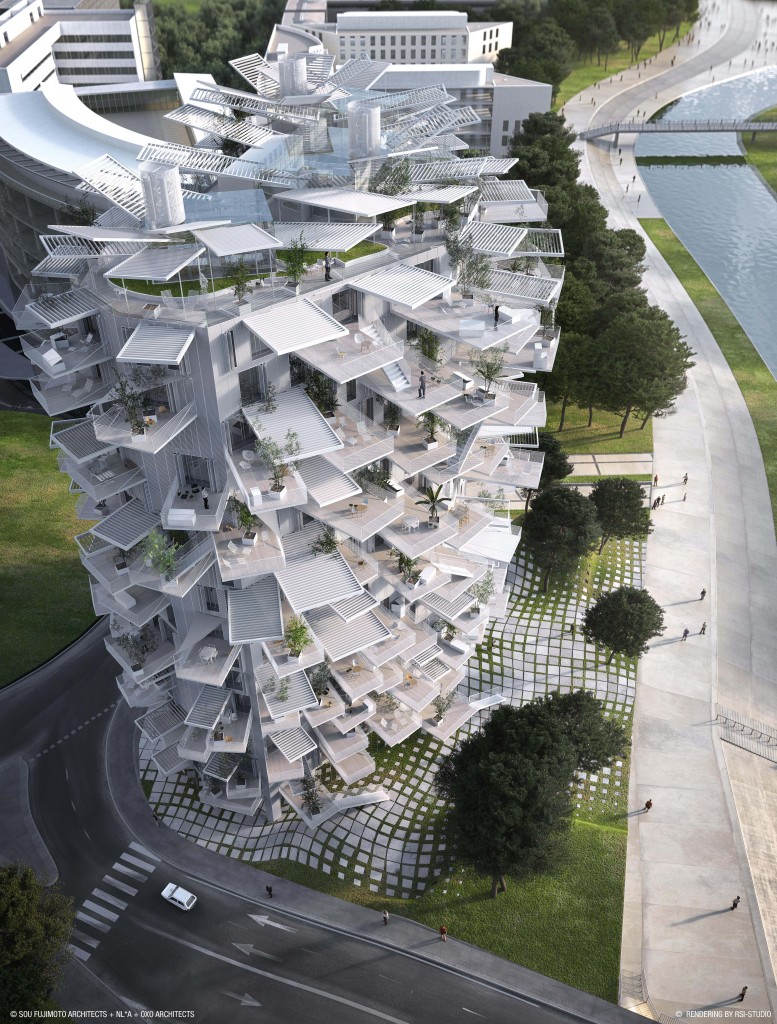
The French city of Montpellier has ventured “outside the box” in pursuit of a design for a new sustainable multi-purpose tower.
After a competition, Montpellier selected architects Sou Fujimoto, Nicolas Laisné Associés and Manal Rachdi Oxo to come up with a unique design known as an architectural folly, or architectural folie, of the 21st century.
The result: A cross-cultural endeavor that embodies modern Montpellier. It’s name? The White Tree, or L’Arbre Blanc. The design is seen as an interchange between two generations of architects, with Sou Fujimoto from Japan, and its state-of-the-art approach complemented by Manal Rachdi Oxo and Nicolas Laisné Associés, representing a younger French generation.

The new tower is designed for housing, a restaurant, an art gallery, offices, a bar with a panoramic view, and a common area. From the project’s concept phase, the architects were heavily inspired by Montpellier’s tradition of outdoor living. The tower will be strategically located between the city centre and the newly-developed districts of Port Marianne and Odysseum, midway between the “old” and the new Montpellier.
The building is intended to meld with, and defer to, its surrounding environment, yet provides just the right added flair. Arching like a pair of wings hugging the contours of the Lez River down to Pompignane Avenue, The White Tree is intended as a natural form that will be carved out or sculpted over time by water or wind. It perfectly mimics a tree reshaping itself to grow into its environment, yet simultaneously enhancing it by offering much-needed shade.
Despite the name – The White Tree – this is by no means an ivory tower. Integral to the urban song, the building is seen as a public high-rise built for everyone in Montpellier.

The edifice will “extend its limbs,” from the ground floor restaurant and art gallery to the penthouse bar, serving as the main viewing area. This will make the tower that much more attractive as a source of pride for Montpellians and a point of interest for tourists. A common space has been added to the public bar where all the residents from any floor can have a private scenic view.
The 17-story high-rise will dominate the Montpellier skyline, creating a once-in-a-lifetime opportunity to soak in the breathtaking expanse, with a view of the ocean, the Pic Saint-Loup mountains, the sprawling city and the Lez River below.
The White Tree has been imbued with Mediterranean character and Japanese culture alike, with dense yet permeable peripheries where inside and outside join forces. The lines are blurred between room and balcony, while uniquely indulgent exterior expanses surrender themselves as full-fledged living spaces. Well-provisioned hanging gardens will take up more than half the space allotted for residential units and offer up places to arrange plants, tables, chairs, benches, storage spaces, etc.
Spaces in the living spaces know no difference between inside and outside – residents will be free to move through them instinctively. The balconies are proportioned to make people gravitate toward the outdoors, like “leaves fanning out to soak up the warm nourishing sunlight.”

Residents will be able to select from a variety of versatile spaces. They will select a setting (west-facing three-bedroom, southeast two-bedroom, etc.) and a preferred floor plan from a list of possible layouts.
The architects sought to encourage free-choice architecture, which they see as underpinning tomorrow’s housing trend, where everyone starts with a “housing stock” when they buy their apartment and are not confined to manufactured articles, regimented layouts or turnkey spaces. Instead, they are given possibilities, modular interior spaces they can choose from in a catalogue of optional features and floor plans.
Just like a tree, the tower will feed off its locally-available natural resources to drastically reduce the energy it needs to expend. It will devise passive strategies to induce comfort and use as well as control environmental impacts and scale back emissions. An unconventional, yet dialectical, process will passively cool units with solar fireplaces. The building implements passive strategies and provides natural and sustainable resources that reduce and control the amount of energy emitted.

L’Arbre Blanc is the tallest folie in Montpellier’s architectural arsenal and is looking to become the city’s focal point; a landmark that serves as a lighthouse, or guiding star, at night, amid the regional urban skyline.
It’s to be an exclusive outlook on the surrounding area, a gift to all the city’s residents and visitors.
It’s to be a starting point from where the vista branches out and your eyes can take it all in: the land’s silhouettes, the open water, the longing it creates for far-off lands and Montpellier’s rich historical heritage.
Erected in a pivotal location for the city, at its core, The White Tree (L’Arbre Blanc) is the very symbol of the Mediterranean, the “midland sea” that has forever been a crossroads, a meeting point between Europe, Africa and Asia.